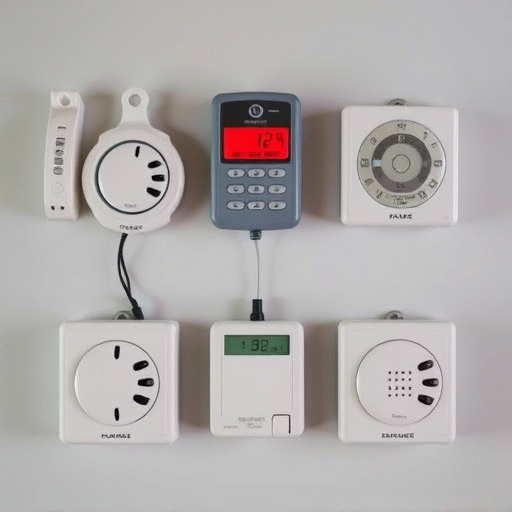Personal Protection Devices (PPDs) have evolved with remote monitoring capabilities. The key difference between rechargeable and battery-powered personal alarms lies in their power sources. Rechargeables offer long-term cost savings and environmental benefits, while battery-operated alarms are widely available, easy to install, and require minimal maintenance. Both types provide reliable performance, with rechargeables offering extended operation times and smart home integration, while battery-powered alarms are more straightforward and suitable for immediate use in emergencies. The optimal choice depends on individual needs, budget, and intended use case, as both significantly enhance personal safety through remote monitoring technologies.
Personal protection devices with remote monitoring are transforming the way we stay safe. This comprehensive guide, “Understanding Personal Protection Devices: A Comprehensive Overview,” delves into two key aspects: rechargeable vs battery-powered alarms and the revolutionary impact of remote monitoring systems. We explore features, benefits, and how these technologies enhance safety in today’s world. By understanding these innovations, you’ll be equipped to make informed decisions for your security needs.
- Understanding Personal Protection Devices: A Comprehensive Overview
- Rechargeable vs Battery-Powered Alarms: Features and Benefits
- Remote Monitoring Systems: Enhancing Safety with Technology
Understanding Personal Protection Devices: A Comprehensive Overview
Personal Protection Devices (PPDs) have evolved significantly, offering advanced solutions for individual safety and security. At their core, PPDs are designed to provide immediate protection against potential threats, with many incorporating remote monitoring capabilities that allow users to stay connected and informed. One key distinction within this category is the power source: Rechargeable versus battery-powered personal alarms.
Rechargeable options not only reduce long-term costs but also offer environmental benefits by minimizing waste from disposable batteries. These devices often come with charging stations, ensuring they’re always ready when needed. On the other hand, traditional battery-operated alarms are widely available, easy to install, and require minimal maintenance beyond replacing batteries regularly. In terms of reliability and performance, both types have their strengths; rechargeable models may offer extended operation times with proper care, while battery-powered alarms are often more straightforward and readily accessible in emergency situations.
Rechargeable vs Battery-Powered Alarms: Features and Benefits
When it comes to personal protection, alarms that are rechargeable vs battery-powered offer distinct advantages and considerations for users. Rechargeable models are a popular choice as they eliminate the constant need for replacing batteries, making them more cost-effective and environmentally friendly in the long run. These alarms can be continuously powered through USB charging, ensuring they’re always ready to protect. Moreover, rechargeable alarms often come with additional features like longer duration, multiple settings, and sometimes even integration with smart home systems for remote monitoring.
On the other hand, traditional battery-powered alarms are known for their simplicity and instant readiness. They don’t require any charging or plugging in, which can be a significant advantage during power outages or outdoor activities. While they may have shorter battery lifespans, these alarms are generally more affordable upfront and can be easily replaced when needed. The choice between rechargeable and battery-powered personal alarms ultimately depends on individual needs, budget, and the specific use case, each offering unique benefits to enhance personal safety.
Remote Monitoring Systems: Enhancing Safety with Technology
Remote Monitoring Systems have revolutionized personal protection, offering a sophisticated layer of safety in today’s digital era. These innovative technologies allow users to keep a vigilant eye on their well-being from a distance, ensuring swift action in case of emergencies. With the advancement of smart devices, individuals can now carry powerful tools that transmit real-time data, enabling quick responses when faced with potential dangers.
One key aspect to consider is the choice between rechargeable and battery-powered personal alarms. Rechargeable options provide a more environmentally friendly and cost-effective solution, as they eliminate the need for frequent battery replacements. On the other hand, traditional battery-powered alarms offer instant readiness and peace of mind, knowing that your device is always charged and ready to protect you at a moment’s notice. The selection depends on individual preferences and specific needs, both options contribute significantly to enhancing personal safety through remote monitoring capabilities.
Personal protection devices, especially those equipped with remote monitoring capabilities, offer unprecedented levels of safety. By understanding the differences between rechargeable and battery-powered alarms, you can make an informed decision to enhance your security. In a world where technology plays a pivotal role, remote monitoring systems revolutionize personal safety, providing peace of mind in today’s digital era.
